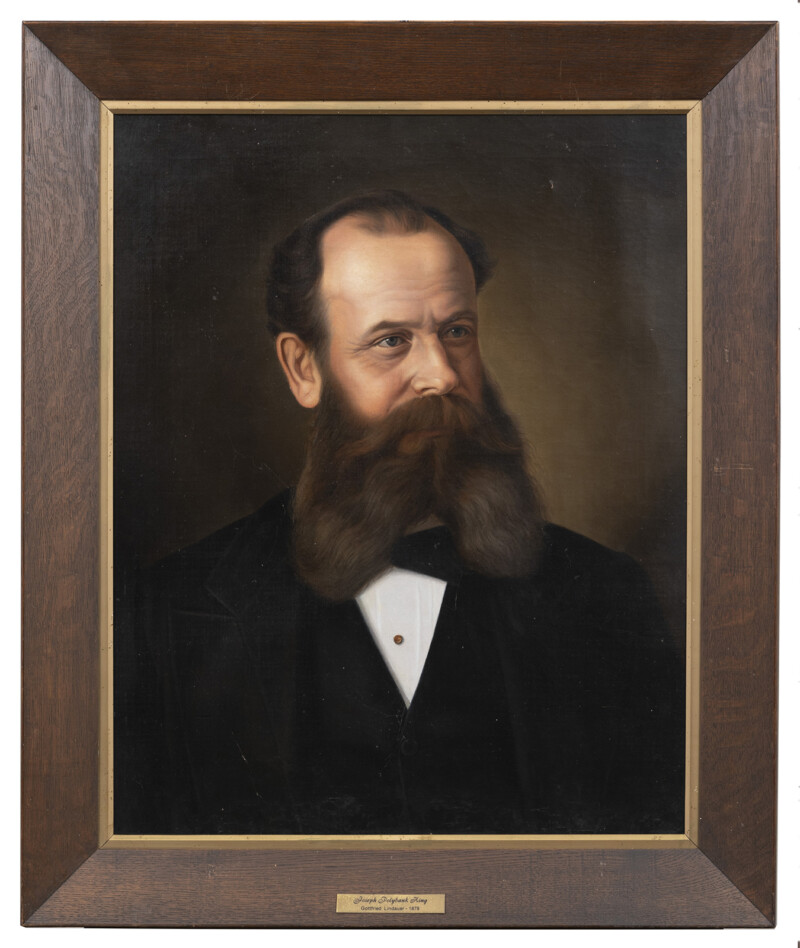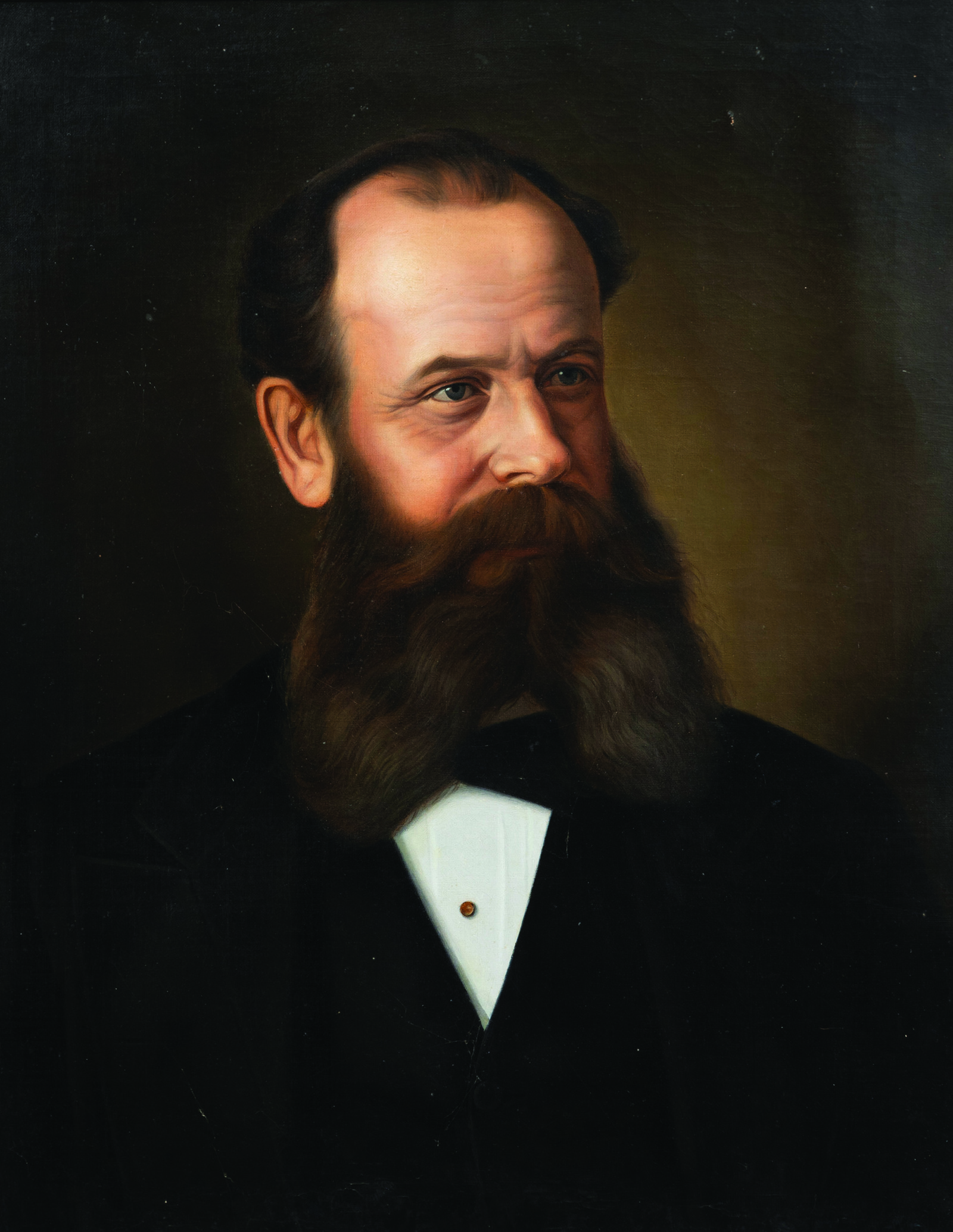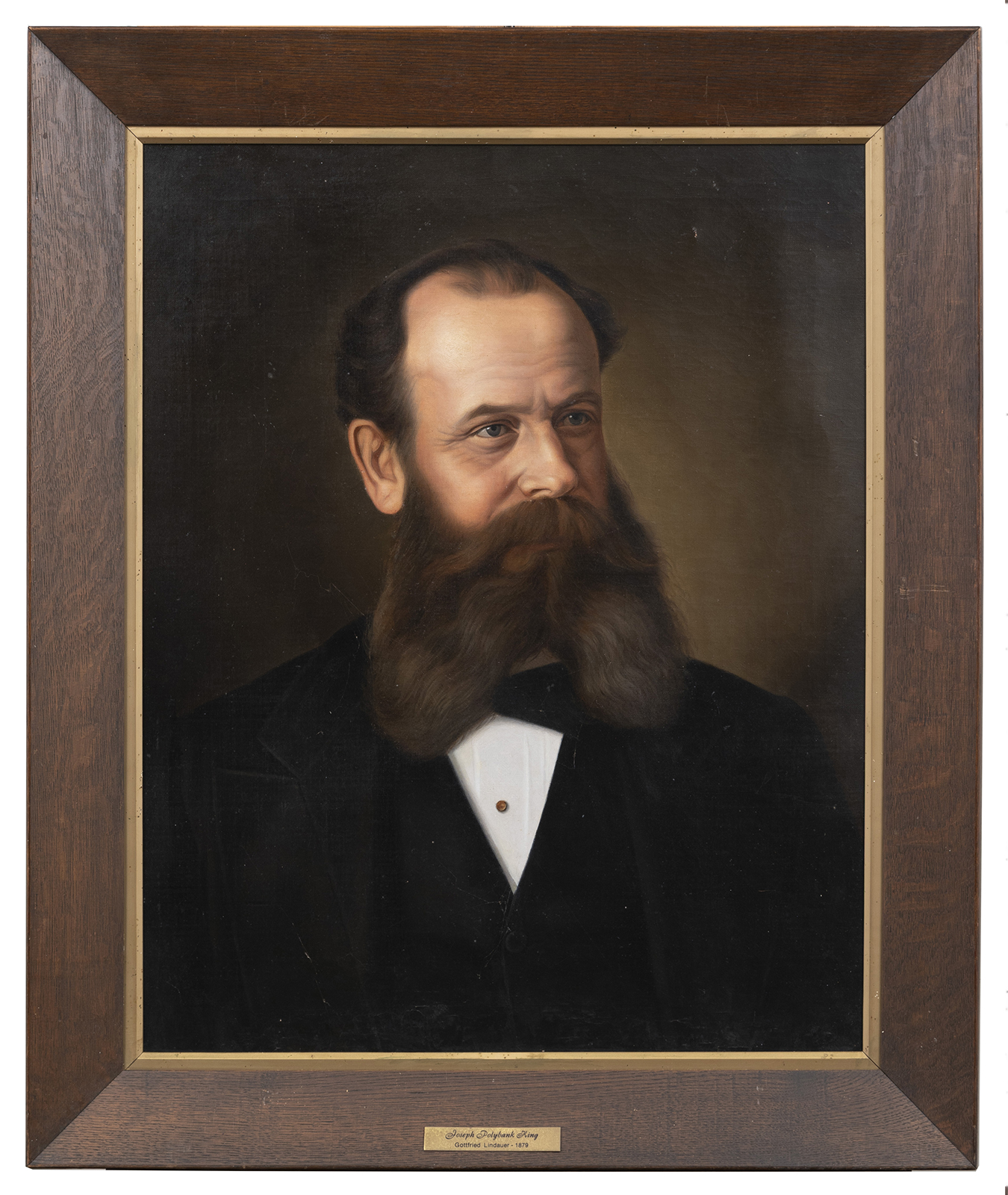LINDAUER, Gottfried;
James Polyblank King
1879
Oil on canvas
640 x 505mm


Gottfried Lindauer was born in 1839 in Plzeň, Bohemia, then part of the Austro-Hungarian Empire. In 1855, he travelled to Vienna, where he studied painting for several years. He worked for a time in the studio of Carl Hemerlein, a portrait painter, before returning to Plzeň, where he establishing his own studio in 1864. In 1874, he immigrated to New Zealand.
Lindauer is today best-known for his portraits of Māori people and his paintings showing ‘scenes from Māori life’. In his day, however, he achieved considerable success as a painter of portraits of Pākehā. He produced a good number of pendant portraits showing couples of status and means. This painting and its partner, Sarah King, are fine examples of the type.
Although its frame carries the label ‘Joseph Polybank King’, the work likely depicts James Polyblank King (c. 1828–1895), a chemist. His obituary notes that he ‘was a native of Bath, where he graduated in his profession, and afterwards went to Montreal, Canada’.[1] There he married Sarah Martin in 1853.[2] The couple returned to England and had two sons.
In 1862, the family immigrated to New Zealand with the Nonconformist group known as the Albertlanders, arriving in Tāmaki Makaurau on the Matilda Wattenbach on 8 September.[3] They settled in Ōtāhuhu and King opened a dispensary. During the Waikato War (1863–64), he served as a surgeon in the Colonial Defence Force Cavalry led by Colonel Marmaduke George Nixon.
In 1868, he was declared bankrupt, but he appears to have recovered his fortunes relatively quickly.[4] He relocated his business to central Auckland and ostensibly took a keen interest in civic matters. In the 1870s and 1880s, he wrote letters to the editors of the Auckland Star and New Zealand Herald, and ran in City Council and Licensing Committee elections.[5] In 1885, he was named a Justice of the Peace.
The detailed court reports of the period include various references to King, as witness, plaintiff, and defendant. All the cases are trivial, but one points to the perils of drugs then commonly available. In 1879, King was charged with failing to properly register the sale of laudanum to Alice Maud Turner, who died after taking it, or perhaps killed herself.[6] He admitted to the infraction and was fined a small sum.
King presumably commissioned this portrait and that of his wife directly from Gottfried Lindauer in 1879. The artist had previously painted Sarah and James Rutherford, who lived near the King family.[7] Sarah Rutherford appears to have sold King a property in central Auckland in 1883.[8]
James Polyblank King died on 26 September 1895, aged 67, and was buried at Purewa Cemetery. He was survived by his wife and three sons.
[1] ‘Death of Mr. J. P. King’, New Zealand Herald, 27 September 1895, 5, https://paperspast.natlib.govt.nz/newspapers/NZH18950927.2.23.
[2] ‘James Polyblank King’, Find a Grave, accessed 11 April 2025, https://www.findagrave.com/memorial/160309325/james_polyblank-king.
[3] ‘Monthly Maritime & Military Record’, New Zealander, 4 October 1862, 5, https://paperspast.natlib.govt.nz/newspapers/NZ18621004.2.22.
[4] New Zealand Herald, 9 October 1868, 1, https://paperspast.natlib.govt.nz/newspapers/NZH18681009.2.2.3.
[5] King was a moderate rather than temperance candidate for the Licensing Committee.
[6] ‘Supposed Poisoning in Parnell’, Auckland Star, 4 March 1879, 3, https://paperspast.natlib.govt.nz/newspapers/AS18790304.2.22; ‘Police Court—This Day’, Auckland Star, 14 March 1879, 2, https://paperspast.natlib.govt.nz/newspapers/AS18790314.2.9.
[7] ‘Sudden Death at Remuera’, New Zealand Herald, 25 May 1882, 5, https://paperspast.natlib.govt.nz/newspapers/NZH18820525.2.22.
[8] Sarah Macready and James Robinson, Slums and Self-Improvement: The History and Archaeology of the Mechanics Institute, Auckland, and Its Chancery Street Neighbourhood (Te Whanganui-a-Tara: Historic Investigation Team, Auckland, for Science and Research Division, Department of Conservation, 1990), 111, https://www.doc.govt.nz/documents/science-and-technical/srir91.pdf.
Provenance
2025–
Fletcher Trust Collection, purchased from Dunbar Sloane, Te Whanganui-a-Tara, 10 April 2025
?–2025
Private collection, Te Waipounamu
1879–?
Collection of James Polybank King and Sarah King, commissioned from the artist (presumably)


